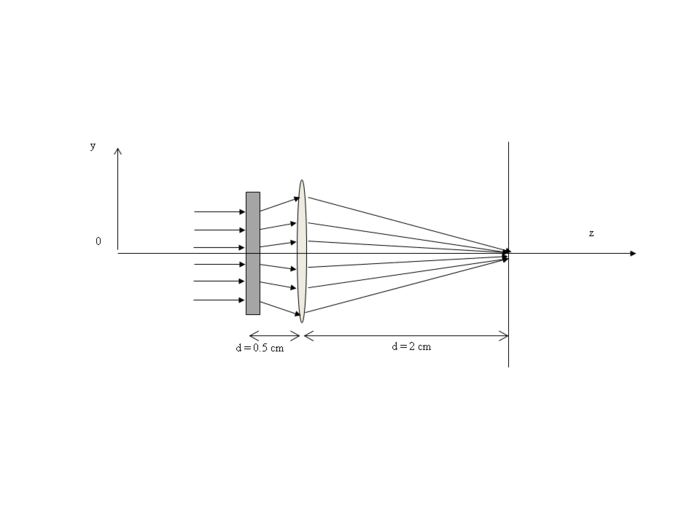Problem Set 1
Contents
Question 1
For this question, you will need to stop by the lab and make a few measurements of lenses. The whole thing should take about twenty minutes.
Part a – measuring focal length
Measure the focal lengths of the lenses marked A, B, C and D
- What is your estimate of the focal length each lens?
Part b – image formation
- What is the relationship between d1 (the distance from the object to the lens), d2 (the distance from the lens to the image plane), and H (the height of the image formed)?
Measure this relationship using the 35mm bi-convex lens, illuminator, and object provided in the lab. Make a plot of your measurements that shows this relationship.
To make the measurements:
- Make sure the power supply current is below 0.5 A (at all times), and turn on the LED illuminator. Ask a TA if you are unfamiliar with the power supply settings.
- Log on to the computer and run IC Capture. This will bring up a window of the live image from the CCD camera.
- Move the lens and/or imaging target to produce a focused image (the target has 50 line-space pairs per inch).
- Measure the distance d1 from the imaging target to the 35mm lens, the distance d2 from the lens to the camera array, and the height H of a feature on the image.
- Measure the height of a feature on the image in pixels. The sensor in the CCD camera has 5.6μm square pixels.
- Repeat this measurement for several values of d1. Make enough measurements to get a smooth plot.
- Make plots of your data showing the relationship between d1, d2, and H. Refer to your class notes or talk to a TA to find the best choices for the x- and y-axes.
Question 2
In lab, you are going to build a microscope. As discussed in lecture, a single lens can act as a magnifier. (You have certainly used a magnifying glass to look at something small.) But all modern microscopes that achieve very high magnifications use multiple lenses in series to make an image. This is clearly a much more expensive design. Why not use a single lens as a high-magnification microscope?
- List three potential problems with a single-lens, high-magnification microscope design. Explain the problems in a few sentences and include a simple sketch.
HINT: Use the information about the behavior of light that was presented in lecture. Think about the underlying assumptions of geometric optics. Under what circumstances in a real microscope design would each assumption be violated? How do these violations impact the final image? If you are stuck, go back to the lecture slides and take a close, logical look at each assumption. Where does each assumption break down? What is the effect of this breakdown in the assumption?
Extra credit
For each problem you identify with a single-lens, high-magnification microscope design, explain in a sentence or two and a brief sketch how multiple lenses might ameliorate the problem.
Question 3
Consider the two-lens system shown in the figure below, where the rectangle on the left represents an unspecified lens of focal length f1 separated by 0.5 cm from another lens with focal length of 1 cm. Find the value of f such that all the rays incident parallel on this system will be focused at the observation plane.
